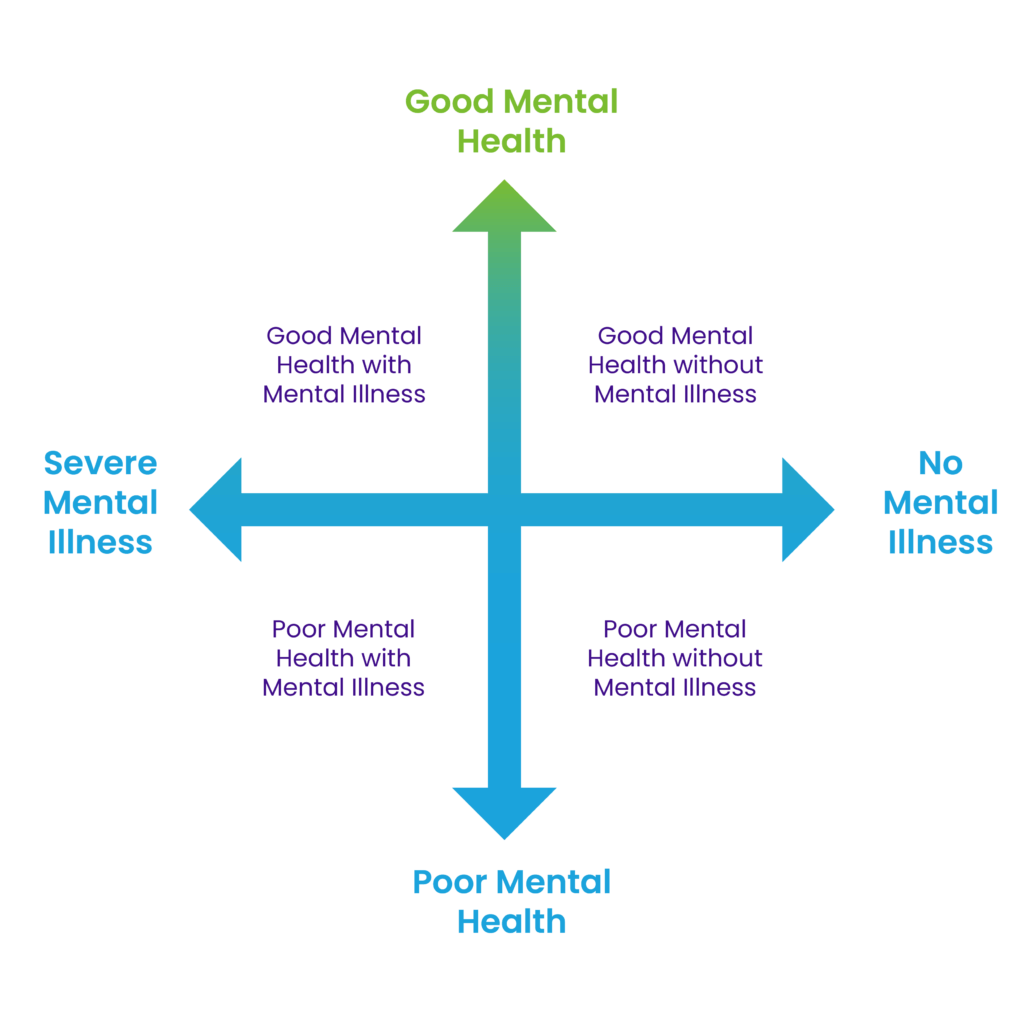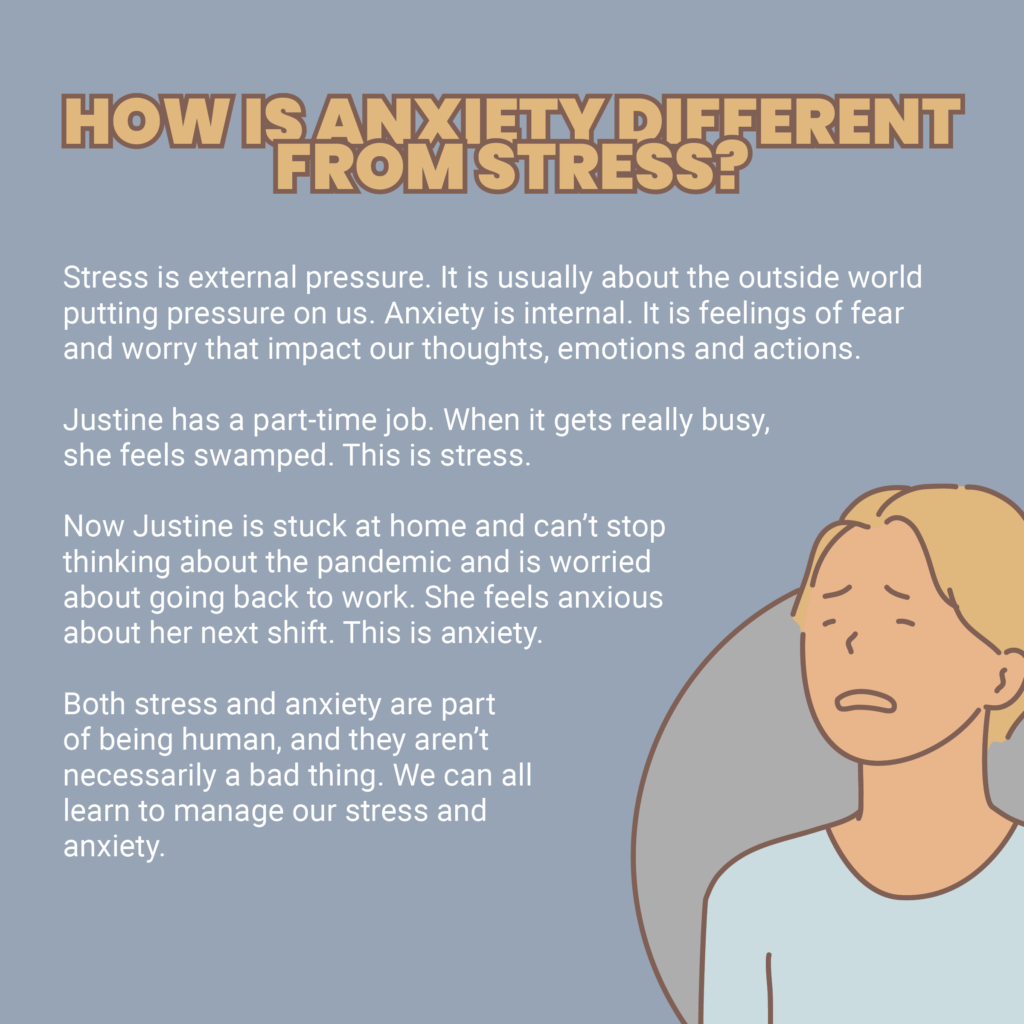How do you take care of your own mental health?
open-ended
Name one HHS resource specifically for mental health
open ended
(refer to fact checking)
Drinking lots of water, getting a good night's rest and spending time with friends are all examples of ___________________
What percent of people have mental health?
100%
Where in the school could you take a friend who is struggling?
Guidance, office, any trusted adult
True or false: how one eats, sleeps and exercises can have a large effect on their mental health.
Kids Help Phone
Share a statistic you know about mental health
open-ended
(refer to fact checking)
True or false: someone with a mental illness can have good mental health
True.
Just as it’s possible to have poor mental health but no mental illness, it’s entirely possible to have good mental health even with a diagnosis of a mental illness. That’s because mental illnesses (like other health problems) are often episodic, meaning there are times (‘episodes’) of ill health and times of better or good health.
With the right supports and tools, anyone can live well—however they define well—and find meaning, contribute to their communities, and work towards their goals.

When is mental health awareness month?
May
What are the four areas of balance?
Physical, Emotional, Spiritual, Mental
What are the names of HHS' guidance counselors?
Nico Bijl, Vanessa Taylor, Ally Myers
What is the most common mental illness?
Anxiety disorders (source: WHO)
Up to what percent of people receiving mental health services have a history of trauma?
90%
A recent study found that trauma rates can be as high as 80 to 90 per cent for clients involved in a clinical practice or service. (CAMH)
What is an example of upholding a boundary?
Ex. If someone asks you to not contact them past a certain time, not contacting them
Checking up on someone to see if you've crossed a previously
Give one example of setting a healthy boundary and explain why boundaries are important.
Examples may include:
Letting parents know when you need alone time, asking people to stop distracting you when you're trying to get work done, letting friends know when we aren't available
Boundaries help us meet our own needs, help develop our independence, promote healthy and sustainable relationships as well as respect to ourselves and others. it enables us to use our energy in the best way possible.
Name a website at which you can be connected to local or virtual therapists.
Psych. Today or fact check
What amount of Canadians have experienced a mental health problem by age 40?
Options are 1 in 10, 1 in 5, 1 in 4 and 1 in 2
1 in 2
By age 40, half of Canadians have experienced any of the following: mood disorder, anxiety, schizophrenia, substance use disorder, ADHD, oppositional defiant disorder, conduct disorder or dementia (source: CAMH)
Is drug addiction a mental illness? Why or why not?
Drug addiction, or substance use disorder, is a mental illness that makes an individual unable to stop using a substance despite obvious harmful consequences. It's classified as a mental illness because addiction changes the brain in fundamental ways, disturbing a person’s normal hierarchy of needs and desires, and substituting new priorities connected with procuring and using drugs.
List three ways you can support someone having a panic attack:
answer may include
- bring the person to a quiet, private place
- encourage them to breathe slowly (you can ask them to breathe with you and match your pace)
-listen
-don't judge
-remain calm
-explain that they might be having a panic attack but they will be okay and it will pass
-stay with them
-reassure them
-follow up after!
The 5-3-2-1 coping technique for anxiety suggests you acknowledge 5 things you can _______, 4 things you can _______, 3 things you can _______, 2 things you can ______ and one thing you can ______.
See, touch, hear, smell, taste
What is the three-digit Canadian suicide hotline number?
211
What does the DSM stand for?
Diagnostic and Statistical Manual for Mental Illness. It is used to identify mental health disorders.
How is anxiety different from stress?

What does the Be There golden rule, "Say what you see," mean?
After recognizing some warning signs in someone's thoughts, feelings or behaviour, talk about it with them non-judgementally and with open-endedness. Stick to the facts of what you have noticed, avoiding assumptions.